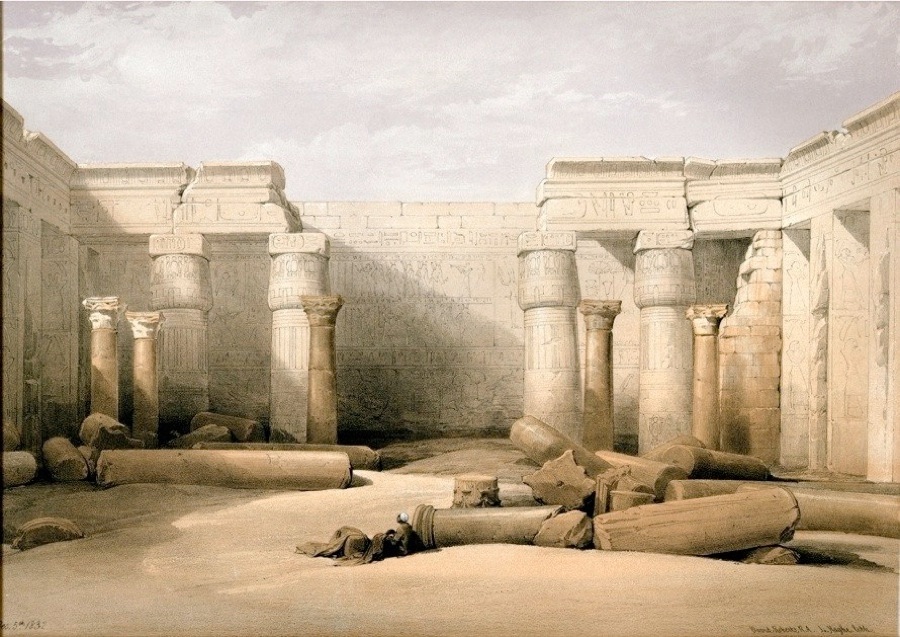RUINS OF A CHRISTIAN CHURCH IN THE GRAND COURT OF THE TEMPLE OF
MEDINET ABOU.
DURING the Lower Empire the town or village of Medinet Abou was still inhabited, and upon the introduction of Christianity the members of this Church converted one of the deserted courts of the great temple into a place for their own worship. The small columns which are seen in this view once supported the rafters which were inserted into the ancient entablature. Under the shade thus afforded the early Christians assembled, and continued until it was adopted into the Greek Church, when the altar was placed against the wall at the east end facing the spectator, in a recess with a semi-circular roof, built also out of the fragments of the heathen temple. The ancient sculptures with which the walls were covered they carefully plastered over with the mud of the Nile, to conceal the idolatrous emblems of their pagan ancestors. To this circumstance we owe the preservation of the sculptures and hieroglyphics which enriched the wall, from which the plaster has now been removed.
There are small apartments at the back of this building which the Christian priests appropriated, and houses of crude brick were erected on the ruins of the ancient village and within the precincts of the temple.
The size of the church and the extent of the village prove its Christian population to have been considerable, and shew that Thebes held a rank among the principal dioceses of the Coptic Church. That it was the church of a Greek see and that the bishop resided here, there is little doubt; – indeed, devices and inscriptions on the walls remove any. It has been conjectured that this was Maximinianopolis, where the Christians had a large church until the period of the Arab invasion. Wilkinson met with the name of a bishop of this diocese in the eastern desert; but Pococke supposes this see to have been the modern Medamôut near Thebes.
With the inroad of the Arabs it is, however, certain that the Christians of Medinet Abou were dispersed, and a period put to the existence there of a Christian church. Its timid community fled on the approach of the invaders to the neighbourhood of Esnè, and their former dwellings ceased to hold a place among the inhabited villages of Thebes.
Roberts’s Journal. Wilkinson’s Egypt and Thebes.


